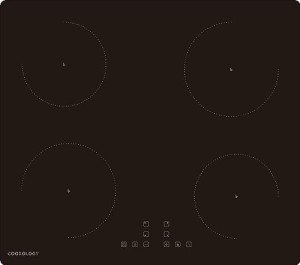Induction Hob Installation: A Comprehensive Guide
Induction hobs have gotten popularity in modern kitchen areas due to their energy effectiveness, speed, and accuracy in cooking. Unlike standard gas or electrical cooktops, induction hobs utilize electro-magnetic energy to directly heat pots and pans. This innovative technology not only improves cooking performance however likewise improves safety by reducing the danger of burns. However, installing an induction hob needs cautious planning and factor to consider of different elements. This article offers a step-by-step guide to induction hob installation, together with essential tips, benefits, and frequently asked concerns.
Benefits of Induction Hobs
Before diving into the installation procedure, let's check out some benefits of induction hobs that make them a preferred option for numerous homes:
- Energy Efficiency: Induction hobs use less energy as they transfer heat directly to cookware, leading to faster cooking times and reduced energy expenses.
- Security: The surface area of an induction hob does not get hot throughout cooking, substantially reducing the threat of burns or fire hazards.
- Easy Cleaning: The flat surface of induction hobs makes them simple to tidy, as spilled food does not get baked onto the surface area.
- Precise Control: Induction hobs make sure rapid temperature changes, enabling accurate control over cooking temperatures.
Key Considerations Before Installation
1. Electrical Requirements
Induction hobs require a greater electrical output compared to standard electrical hobs. Ovens And Hobs that your electrical supply fulfills the requirements of your particular induction model, generally 3 kW to 7.4 kW.
2. Cookware Compatibility
Induction cooking counts on magnetic pots and pans. Simplistically, if a magnet sticks to the bottom of your pots and pans, they appropriate for induction cooking.
3. Worktop Specifications
Your kitchen area worktop must support the weight of the induction hob and accommodate the installation measurements. Ensure that the worktop material is heat-resistant and ideal for kitchen area use.
4. Space Utilization
Think about the available space in your kitchen and how the induction hob will fit within that environment. You must likewise leave appropriate clearance for airflow around the home appliance.
Table 1: Induction Hob Dimensions and Space Requirements
| Induction Hob Size | Minimum Installation Depth | Minimum Clearance Height | Suggested Countertop Thickness |
|---|---|---|---|
| 30 cm | 60 cm | 30 cm | 2.5 cm to 4 cm |
| 60 cm | 60 cm | 30 cm | 2.5 cm to 4 cm |
| 90 cm | 60 cm | 30 cm | 2.5 cm to 4 cm |
Step-by-Step Guide to Installing an Induction Hob
This section offers an in-depth installation procedure, making sure that your induction hob is set up safely and correctly.
Step 1: Gather Required Tools and Materials
- Induction hob
- Screwdriver
- Level
- Measuring tape
- Underlay or insulation products
- Electrical electrical wiring (consult an expert electrical expert)
Step 2: Prepare the Worktop
- Measure the Installation Area: Ensure that the worktop has adequate space for the hob. Use a measuring tape, and mark the lays out of the required cut.
- Cut the Opening: Using a proper saw, cut the opening in the worktop, guaranteeing smooth edges.
- Tidy the Area: Remove any particles or dust from the cut area to prepare for installation.
Step 3: Position the Hob
- Location the Hob: Carefully place the hob in the prepared opening, guaranteeing it is level.
- Secure with Clips: If your design includes installation clips, use them to protect the hob to the worktop.
Step 4: Electrical Connection
- Link to Power Supply: This step needs to be brought out by a qualified electrical expert. Follow the manufacturer's instructions for circuitry, making sure that all connections are safe and adhere to regional electrical guidelines.
Step 5: Check for Leaks
- After linking the induction hob, turn it on to check its functionality. Make sure there are no gaps between the hob and worktop that could lead to water ingress.
Step 6: Finalize the Installation
- As soon as evaluated, make sure that all screws are tightened, and the hob is flush with the worktop. Clean the surface area to remove any finger prints or debris.
Frequently Asked Questions about Induction Hob Installation
1. Is it safe to set up an induction hob myself?
While DIY installation is possible for those with electrical knowledge, it's a good idea to hire an expert electrical contractor to make sure safety and compliance with regional regulations.
2. What are the common problems during installation?
Typical issues include inaccurate measurements, failure to inspect pots and pans compatibility, and inadequate electrical supply.
3. Can I install an induction hob over a drawer or cabinet?
It is not advised to set up an induction hob directly over a drawer without appropriate heat insulations, as it may trigger damage to the cabinetry.
4. How do I understand if my pots and pans works?
Conduct a simple magnet test. If the magnet adheres to the bottom, your cookware is induction suitable.
5. What should I do if the hob does not warm up?
Examine the power supply and verify that the hob is appropriately installed. If concerns continue, speak with the manufacturer's support or a certified professional.
Induction hobs offer a modern and effective cooking service that can enhance any kitchen area. While installation may seem difficult, comprehending the requirements and following an extensive guide can streamline the procedure. Prospective buyers must consider hiring an expert for electrical connections to ensure safety. With the right preparation and knowledge, setting up an induction hob can transform cooking experiences in amazing methods.
With this information at hand, possible users can make informed choices about transitioning to induction cooking and installing their brand-new hobs, causing a more secure and more efficient cooking area.

